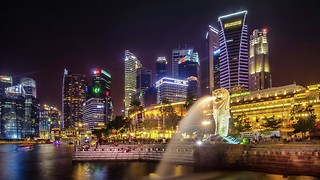Theatre: three plays at the Traverse Theatre
Jack Hudson gives his opinion on The Wheel, What Remains and The Monster in the Hall at the Edinburgh Fringe

Many of the best things I saw at the Fringe this August were staged by the Traverse Theatre, one of Edinburgh's permanent theatrical venues which specialises in new writing. Far from being a poor man's Royal Court, the theatre put on a stellar festival programme, beginning with Zinnie Harris’s Fringe First winning play, The Wheel.
A haunting depiction of war, The Wheel charts the ever more hopeless struggle of its protagonist (Catherine Walsch) to reunite three children with their parents. It is, in the author's own words, an exploration of “what happens when a child goes wrong.” The play begins in rural nineteenth century Spain, but as one conflict begins to blend into another the characters journey seamlessly through two world wars, Vietnam and something eerily current. As the title might suggest, there are strong tones of the cyclical nature of war throughout and we are spared none of the lows to which humanity sinks at such times – exploitation, desperate spiritualism, torture - not to mention something sinister growing in the children. Merle Hensel’s multi-layered set is beautifully crafted and skilfully used by director, Vicky Featherstone, and the multi-cultural cast (presumably chosen to emphasise the play’s universal themes) give solid performances. All in the all, a production that both moved and deeply chilled as it descended towards its surreal conclusion.
Next on the list was Grid Iron’s site-specific What Remains, staged in the anatomy department of the Edinburgh medical school. Dreamed up by composer David Paul Jones and director Ben Harrison, What Remains plunged its audience into the world of the Conservatoire of the Anatomy of Music, the halls of which are stalked by Gilbert K. Prendergast and his master (or is that alter-ego?) the Maestro. Think The Innocents meets The 5000 Fingers of Dr. T. Or, if those references don’t help, think horror film set in a piano school.
After an impressive rendition of Prendergast’s final masterpiece, (performed by Jones, the sole performer) we are led in groups into three rooms where elements of the story are revealed, or rather, experienced. Our journey took us from a museum of creepy objects (a chalk-board suicide note, an eyeball in a fridge, a piano that played itself), via a dormitory where we were lulled like prospective music students into clinical sleeping bags, to our first piano lesson – led by the unforgiving voice of the maestro himself. Finally, we followed Prendergast upstairs to witness his ultimate descent into insanity at his beloved piano (located behind large iron gates in the anatomy school’s own museum, replete with not one, but two elephant skeletons).
Despite the level of detail in the presentation, much of the story was left to our own imaginations, in keeping with the horror film rule that what you don't see is often scarier than what you do. The short story which Harrison wrote before the play can be found on the company’s website; it adds another medium to the experience and explains many of the details (the bowls of mouldy soup and bread outside one door, for example, are the meals with Prendergast refused to eat when he found out his piano teacher had died) but the production stands alone without it thanks to the gripping central performance and impressive, atmospheric soundscape. My only wish is that it could have gone on for longer than an hour.
The last thing I saw, this time in the Traverse’s studio space, was David Greig’s ‘indie comedy musical’ The Monster in the Hall. Under Guy Hollands’ inventive direction and with little more than four microphones and a set of pink flyaway glasses, the cast tell the story of Duck (short for Ducati) Macatarsne and her ex-Hell’s Angels father, The Duke, who suffers from increasingly severe MS, on the day that a visit from the social services threatens to tear their family apart. Naturally, everything goes wrong – the flat is a mess, The Duke wakes up blind and uninvited guests are quickly stowed in a cupboard.
This is farce at its best but with a twist - there is no set and no props – just inordinate amounts of energy, brilliant mime and some desperate character doubling. The songs take the form of short, snappy doo-wop numbers (cue flyaways) which give the production its Grease-style musical aesthetic and stop the story from becoming the depressing kitchen sink drama that it could have been under another writer. The cast of four, who were rightly rewarded with the Stage’s award for best ensemble performance, do an incredible job of depicting a variety characters and maintaining the energy required to keep the show so relentlessly entertaining. This is was a moving piece of inventive theatre which could not fail to please the punters.
 News / Council rejects Wolfson’s planned expansion28 August 2025
News / Council rejects Wolfson’s planned expansion28 August 2025 News / Tompkins Table 2025: Trinity widens gap on Christ’s19 August 2025
News / Tompkins Table 2025: Trinity widens gap on Christ’s19 August 2025 Interviews / GK Barry’s journey from Revs to Reality TV31 August 2025
Interviews / GK Barry’s journey from Revs to Reality TV31 August 2025 News / Cambridge’s tallest building restored to former glory1 September 2025
News / Cambridge’s tallest building restored to former glory1 September 2025 Lifestyle / The internship he told you not to worry about1 September 2025
Lifestyle / The internship he told you not to worry about1 September 2025








